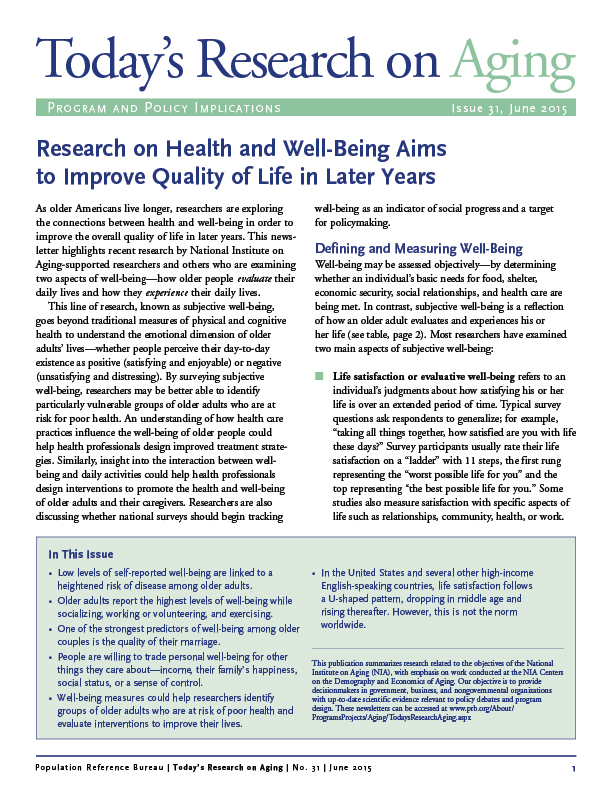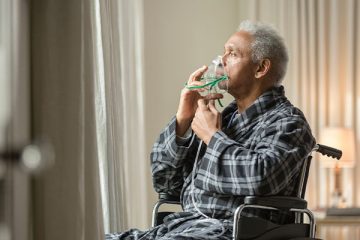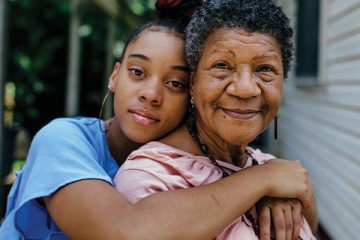As older Americans live longer, researchers are exploring the connections between health and well-being in order to improve the overall quality of life in later years.
This newsletter highlights recent research by National Institute on Aging-supported researchers and others who are examining two aspects of well-being—how older people evaluate their daily lives and how they experience their daily lives.
This line of research, known as subjective well-being, goes beyond traditional measures of physical and cognitive health to understand the emotional dimension of older adults’ lives—whether people perceive their day-to-day existence as positive (satisfying and enjoyable) or negative (unsatisfying and distressing).
People in the United States and several other high-income English-speaking countries tend to rate their life satisfaction lowest during middle age (ages 45 to 54) but higher again thereafter (ages 55 and 75). However, this U-shaped pattern is not the norm worldwide (see figure).
Note: Respondents ranked their satisfaction with life on a 0-10 scale of best possible to worst possible life for them. The high-income English-speaking countries include the United States, Canada, the United Kingdom, Ireland, Australia, and New Zealand.
Source: Andrew Steptoe, Angus Deaton, and Arthur Stone, “Subjective Wellbeing, Health, and Ageing,” Lancet, November 2014.
By surveying subjective well-being, researchers may be better able to identify particularly vulnerable groups of older adults who are at risk for poor health. An understanding of how health care practices influence the well-being of older people could help health professionals design improved treatment strategies. Researchers are also discussing whether national surveys should begin tracking well-being as an indicator of social progress and a target for policymaking.
Highlights
- Low levels of self-reported well-being are linked to a heightened risk of disease among older adults.
- Older adults report the highest levels of well-being while socializing, working or volunteering, and exercising.
- One of the strongest predictors of well-being among older couples is the quality of their marriage.
- People are willing to trade personal well-being for other things they care about—income, their family’s happiness, social status, or a sense of control.
- Well-being measures could help researchers identify groups of older adults who are at risk of poor health and evaluate interventions to improve their lives.


 ">
">




